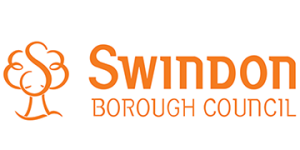School catch-up: using the engagement model to face coronavirus challenges

Throughout this pandemic I have been struck by a gap. No, not the achievement gap between more and less disadvantaged students (though we’ll get to that later).
The gap I see is the one between the response we have so far to meeting the challenges Covid-19 presents, and the response required by the enormity of this pandemic and its effects.
What is needed is flexibility, responsiveness and creativity. What we often see instead is a call to already-existing structures, a desire to re-form around the old ways as if nothing has happened and what can feel like a refusal to acknowledge that we may need to do some things differently.
Models of grief and loss provide a valuable lens through which to understand these different ways of responding to a crisis. In the Kübler-Ross five stage model, the threads of denial and bargaining can be seen to underpin rigid responses or those that look to the past. We need to consider acceptance, and the most useful course of action to help us move towards that point.
Search for the secrets inside yourself…
As M People told us persuasively many years ago, you’ve got to search for the secrets inside yourself, until you find the key to your life (slightly paraphrased, sorry Heather Small – you are wonderful). In fact, we already have the secrets to facing the educational challenges thrown up by this pandemic.
In a beautifully timed coincidence, March 2020 marked the release of DfE guidance on using The Engagement Model as a replacement for P scales. The Engagement Model is a tool to assess pupils who are working below the standard of national curriculum assessments and who are not engaged in subject-specific study at key stage 1 and key stage 2. Unfortunately, coronavirus disrupted the official statutory launch of The Engagement Model in 2020 and it is now due to become statutory in September 2021. There is, however, plenty to learn from the model and the strands of the framework give us a guiding structure for a thoughtful and imaginative way forward for education settings and students as we emerge from this current national lockdown.
The most recent version of The Engagement Model comprises five strands (exploration, realisation, anticipation, persistence and initiation). However, I find the original, with its seven strands, a more useful tool as the learning behaviours that form the profile appear to be more specific and thus more easily observed and monitored. These seven behaviours are:
- responsiveness
- curiosity
- investigation
- discovery
- anticipation
- persistence
- initiation.
It is useful to consider how the Engagement Profile can help us all as learners in this very unique set of circumstances.
Curiosity
The catch-up narrative
The main messaging that appears to be emerging in terms of recovering from the impact of the pandemic concerns ‘catch up’. Catch-up tuition is to be funded by the UK government and summer schools will include sports as well as academic work. The Welsh Government are considering shortening summer holidays so that students can catch up. Scotland has thus far put more money into education recovery than any other part of the UK (according to a recent Education Policy Institute study).
While these are well-intentioned policies, and certainly additional funding is essential for schools and other education settings, there seems to be a lack of imagination about what students are ‘catching up’ to. While there are references to sports and mental health, the overwhelming focus is on an idea of chunks of a set curriculum which have been lost and therefore a block of time needs to be identified to deliver this learning.
What appears to be overlooked in much of the catch up messaging is that many students have been accessing a significant amount of learning throughout the Covid-19 pandemic (whether while learning at home or attending on-site school as a vulnerable or key worker pupil). Some students have benefitted from off-curriculum learning experiences at home (creative activities, baking, sports and natural world learning) which have undoubtedly enriched their lives and taught them new skills.
Curiosity to explore interacting factors
The focus on catch up risks negating these various experiences and over-looking the colossal efforts of school staff (from leaders to teachers to support to administrative staff) and parents/carers to provide positive educational experiences for children and young people. It is also a potentially damaging message for young people to hear, that they need to ‘catch up’ and are somehow on a back foot despite the fact that the whole country is experiencing this pandemic.
We can adopt curiosity when we consider the idea of catch up. What are students catching up to and why? If it is a pre-existing curriculum, what has actually been missed and what is really essential for students’ onward learning journeys? We also need to be curious about the mechanisms we use to try to alleviate the gap between the progress and achievements of our most and least disadvantaged young people.
Rather than identifying another group of vulnerable students who will be eligible for some form of top-up funding, let’s think broader. Providing top-up funding for specific groups reinforces notions of individually located problems that can then become a rather fixed category which it is difficult to move on from over time. If we have identified more vulnerable children, rather than locating the impact of the pandemic within them (with a register code or an annual premium for the school, for example), let’s recognise that these children are vulnerable due to a complex interaction of factors and we can support them far more effectively by making whole system, or whole school, change.
Investigation
Rather than relying on an appealing but ultimately perhaps ill-fitting idea of catching up, let’s instead investigate
Where are we at now?
Very little about this school year has been normal. I feel some sense of frustration that there was not greater recognition before September 2020 that this academic year would not be normal, and schools could not be held to normal expectations.
While we may not have known of future lockdowns, we could have predicted disruption to teaching and learning, with either students or teachers missing periods of time due to isolating or having coronavirus. We could have done more to encourage schools’ creativity and flexibility in terms of the curriculum they planned to deliver (with the excellent Oak Academy resources available as required).
Acknowledging and accepting the present
What is clear is that there has been considerable disruption throughout this school year. Schools have needed to close bubbles at different times and there have been varying degrees of shifting between remote and on-site learning. The need for ongoing adaptation requires mental and physical energy, which is harder to come by when many of us are less connected to our social support networks than usual.
Many of us are operating with a higher than usual baseline stress level and this is no different for children and school staff. School systems are more easily tipped into a fight or flight response given these higher stress levels and we should be mindful if faced with a situation that appears to be more reactive than we would usually expect (such as when thinking broadly about behaviour and exclusions). We need to fully acknowledge and recognise what a different time this is. And we need to be responsive.
Responsiveness
We have an opportunity to rethink what we want children to achieve from an education. To look at the positives and successes, some of them surprising, that have emerged over the last year and consider how we can continue these going forward.
A responsive classroom
For example, some students with additional needs or who have attended on-site school as vulnerable children (perhaps because they are looked after by the local authority) have settled much better into learning in a smaller class bubble than they fared in usual whole class teaching. Of course, it is not easy to replicate this model with classes of 30 plus children but perhaps there are threads we can continue.
What might we be able to achieve with small group teaching in primary schools: for example, could a class have three PE sessions per week, so that on one of these occasions a smaller group of the class (around 10 pupils) could have a weekly lesson with their teacher? The lesson should involve a discursive element, to make the most of the small group format, and could focus on key skills such as reading comprehension or PSHE (a positively evaluated programme such as Philosophy for Children perhaps). This would require staffing – sports coaches and cover teaching to ensure teachers still have their necessary planning time – but with additional funding schools could consider such a model.
A responsive lunchtime to promote wellbeing
Schools such as Reach Academy have huge success with their shared mealtime approach, utilising a family model to build relationships, a sense of community and life skills for their students. Evidence from the attachment literature and neuroscience, speaks to the crucial nature of relationships. Children need a secure base from which to learn; they need to feel valued in order to take risks, including with their learning; and a sense of belonging is an important protective factor for students (Center for Disease Control & Prevention, 2009).
The wellbeing and mental health of young people is never far from the headlines, so let’s take the opportunity to nourish relationships when we know that social connectedness is an important mitigator of the impact of mental health difficulties. Extending lunch times to enable shared mealtimes to take place would create moments of connection in the day, as well the chance for young people to strengthen a relationship with a key adult and with their peers. There is the potential to develop young people’s discursive skills, as well as a whole host of other social skills.
Responsive transitions
A further observation from this current academic year is that, when September 2020 arrived, transition year groups often seemed to struggle or presented differently to students in years gone by. Whether Reception aged children, those moving into Key Stage 2 or Year 7s starting secondary school, some re-calibration of expectations (learning, behaviour and social) was necessary.
We need to look ahead to September 2021, and the Septembers for a few years beyond that I would suggest, to consider what we really want to focus on with students in these transition year groups. We can try to squeeze students into the mould of previous Year 7s, or Year 3s, or Year 12s, but I think this exercise might take just as long as acknowledging a period of accommodation. It would focus on deficit and gap, rather than embracing new possibilities. Don’t forget, it’s not just academic attainment that was impacted, it was learning behaviours and social skills, and likely other elements of development too.
Taking Year 7 as an example, we can step back and ask ourselves what the foundations are of a secondary learning curriculum. What skills do students need for the modern world, including digital literacy, and how we can ensure a social and emotional curriculum to provide additional bridging between primary and secondary school? This social-emotional curriculum needs to encompass creating experiential learning of resilience, as well as teaching critical thinking skills and an understanding of what mental health is (including normalising a range of emotions and how we can look after our mental health in the same way as our physical health).
Discovery
What we come to through curiosity, investigation and responsiveness is discovery. Discovery that we do not need to hold polarised views that, on the one hand, everything is a disaster and this is a generation robbed of chances or, on the other, that children will immediately bounce back to what we have expected in the past with only a few suffering lasting impact.
Rather, this experience may have changed us – and that’s ok.
Loss and the jar of life
Resilience is such an important concept here: resilience isn’t about striding through any event with a Teflon suit on, brushing off any potential knocks and scrapes. It’s about being flexible, accommodating to the need to change without buckling under the weight of this. Incorporating the impact of what life throws at us and being able to move forward and find meaning.
A different model of grief gives us a valuable way to understand the future: Tonkin suggests that we grow around grief. A lovely illustration of a ball in a jar represents how grief or loss changes over time. The ball (the loss) does not change or shrink as time passes, but instead the jar (our life as a whole) grows in size as we gradually engage in different experiences and enrich our lives by continuing to move forward.
For our children and young people, perhaps there will be an impact of the Covid-19 pandemic, but their lives will continue to grow, expand and become larger. Let us help them with this expansiveness. We need to go forward with a discovery mindset, focusing on where there are possibilities, and also where we need to acknowledge what is now different and therefore requires a change in approach.
Persistence
Persistence is a very important tool in our toolkit. I recently attended an online webinar about the fantastic work done by Jamie’s Farm (which has clear parallels in its approach to the family model adopted by Reach Academy). As a range of contributors reflected on their pandemic experiences and offered valuable insights, I realised how much learning we have to do from those working with young people every day.
Growth, play and wellbeing
I hope that our education recovery closely reflects on-the-ground experiences. There is so much more we can do for children than tell them they must catch up.
Our response as schools return to more on-site learning should incorporate the range of messages we have heard about the importance of play and recognise that play must form a key component of any recovery curriculum.
We need to acknowledge the surveys and reports that tell us about the increase in children’s mental health difficulties and start to truly teach about mental health and how to support young people to be mentally healthy in schools.
These are complicated tasks, but one thing is clear: we need to remain engaged as a community of psychologists, keep talking to each other, and broaden the conversation out to involve others. Sharing ideas, perspectives and experiences enables us to challenge our thinking and move beyond our comfort zones. It is this persistence that will bring new learning.
Anticipation
So, as we look forwards, let’s take a brief stop at anticipation before moving on to initiation.
What should we expect as schools start to open up to more students? There is an ongoing need for clarity, structure and consistency of message – both for adults and for children. Parents and carers need to know that their children will be met where they are, not held up to a somewhat arbitrary yardstick and found wanting.
School staff need to know what is and what is not expected of them in the months ahead (particularly curriculum and pastoral expectations for the next academic year). Children and young people need to know that the last year has not been a waste, that their futures are still shimmering ahead and that adults will make the necessary adaptations to support them to meet these futures in the best way possible.
Initiation
And so to initiation, the final stop on this iteration of our learning journey. This is a chance for us to take a deep breath and really think about the curriculum.
Initiating change: the national curriculum
Previous guidance around planning for school return in September 2020 encouraged schools to consider curriculum adaptations they needed to make, but we could to think bigger and at a more national level. There have been calls over the years for our exam and testing system to be reconsidered, a recent notable example being The Future of Education, an October 2020 report released by the One Nation group of MPs. This paper argued for changes to GCSEs, citing the amount of testing our young people experience in the space of a few years as a source of stress and anxiety, as well as highlighting the redundancy of national exams at the end of Year 11 given that all students now access education until they are 18 years old.
To make space in the academic timetable for some of the suggestions in this blog, we may need to reduce curriculum content. This is perhaps a task for exam boards and testing bodies, to remove a proportion of the content from a syllabus to allow additional skills practise in each subject, as well as to facilitate children to access a broad and balanced curriculum. There will likely be many educators with valuable contributions to make if such an endeavour was to take place.
Change is difficult, disrupting, uncomfortable – and necessary. Let us focus on creating hope for the children and families we champion, and let’s keep learning.




